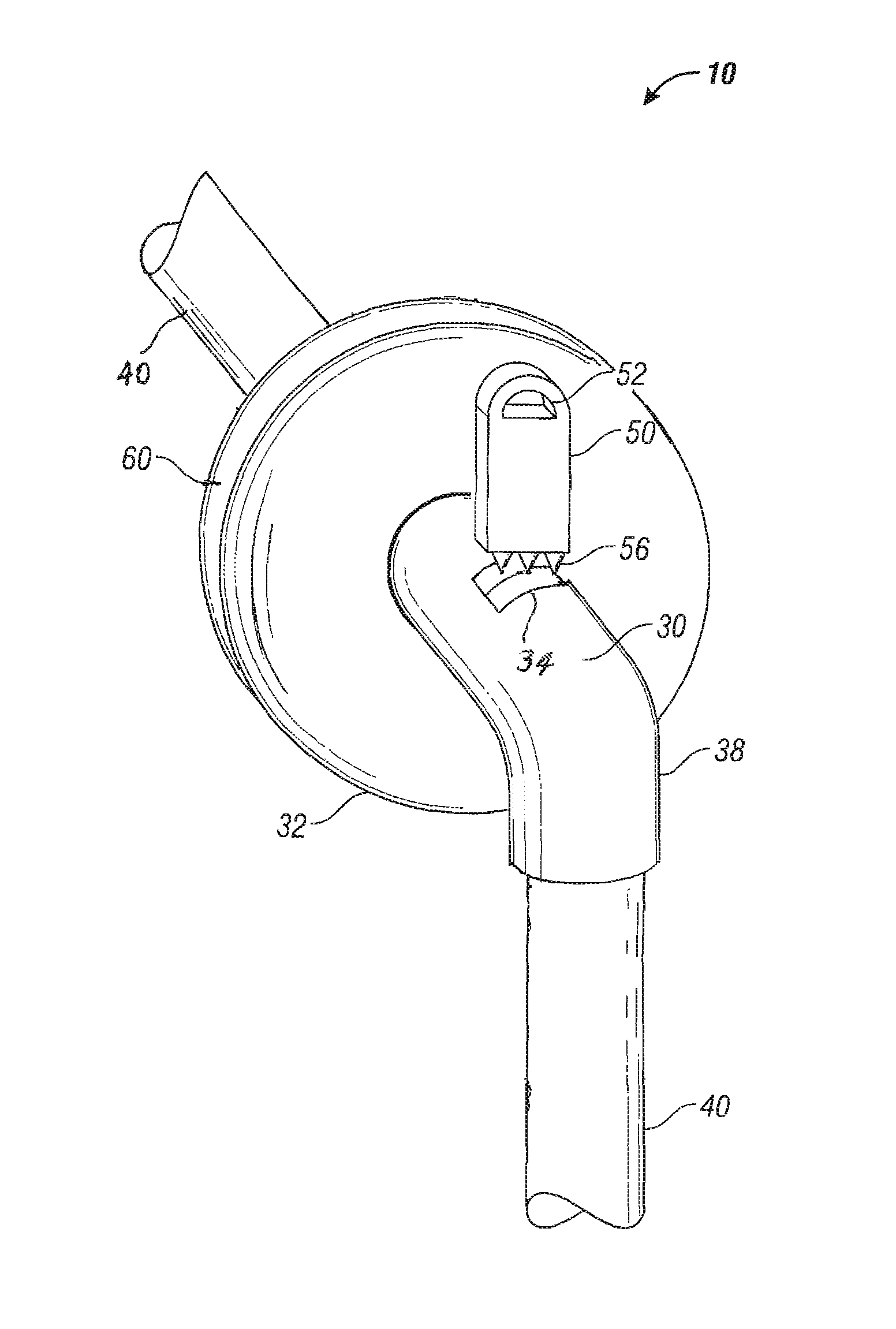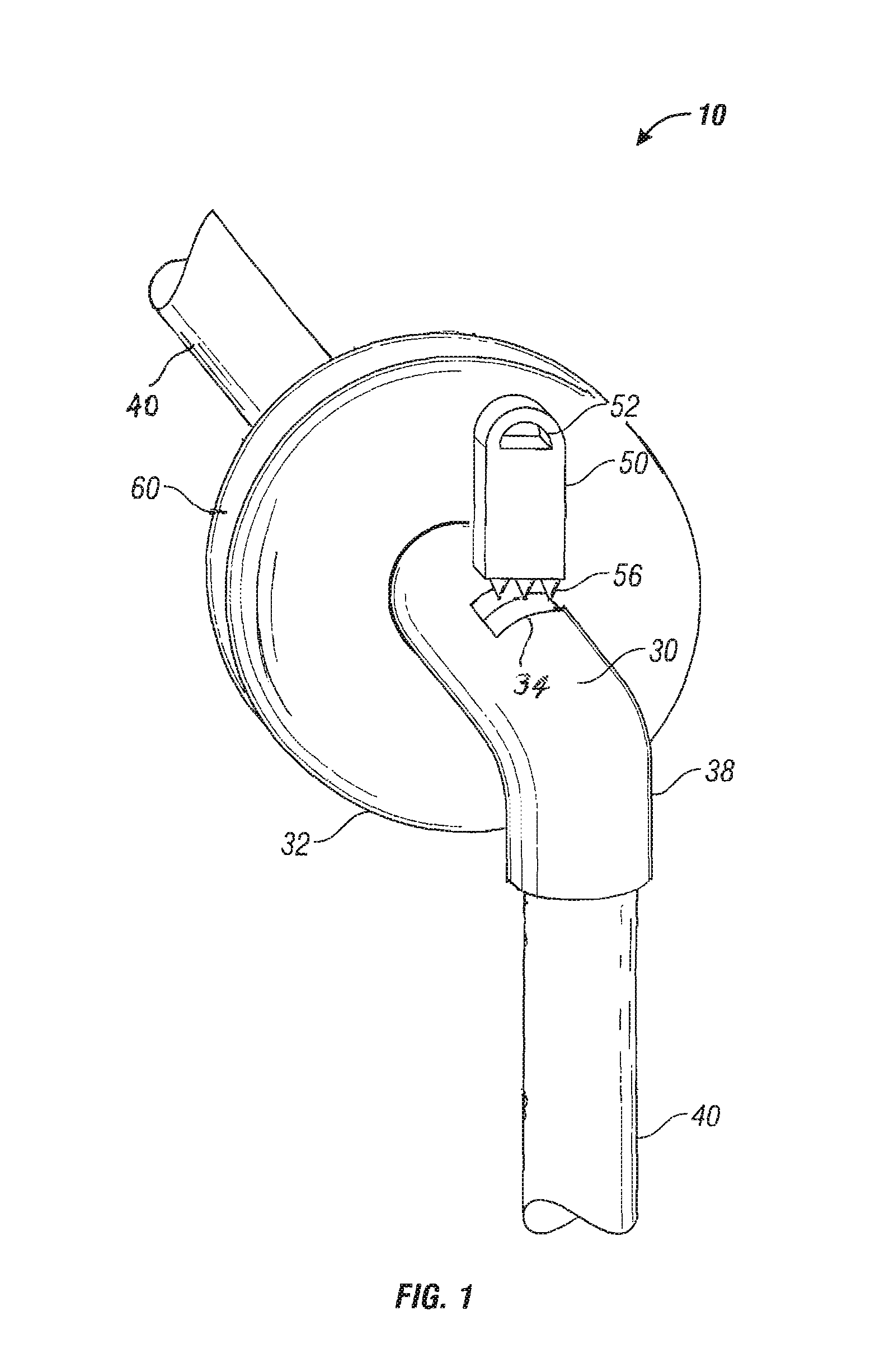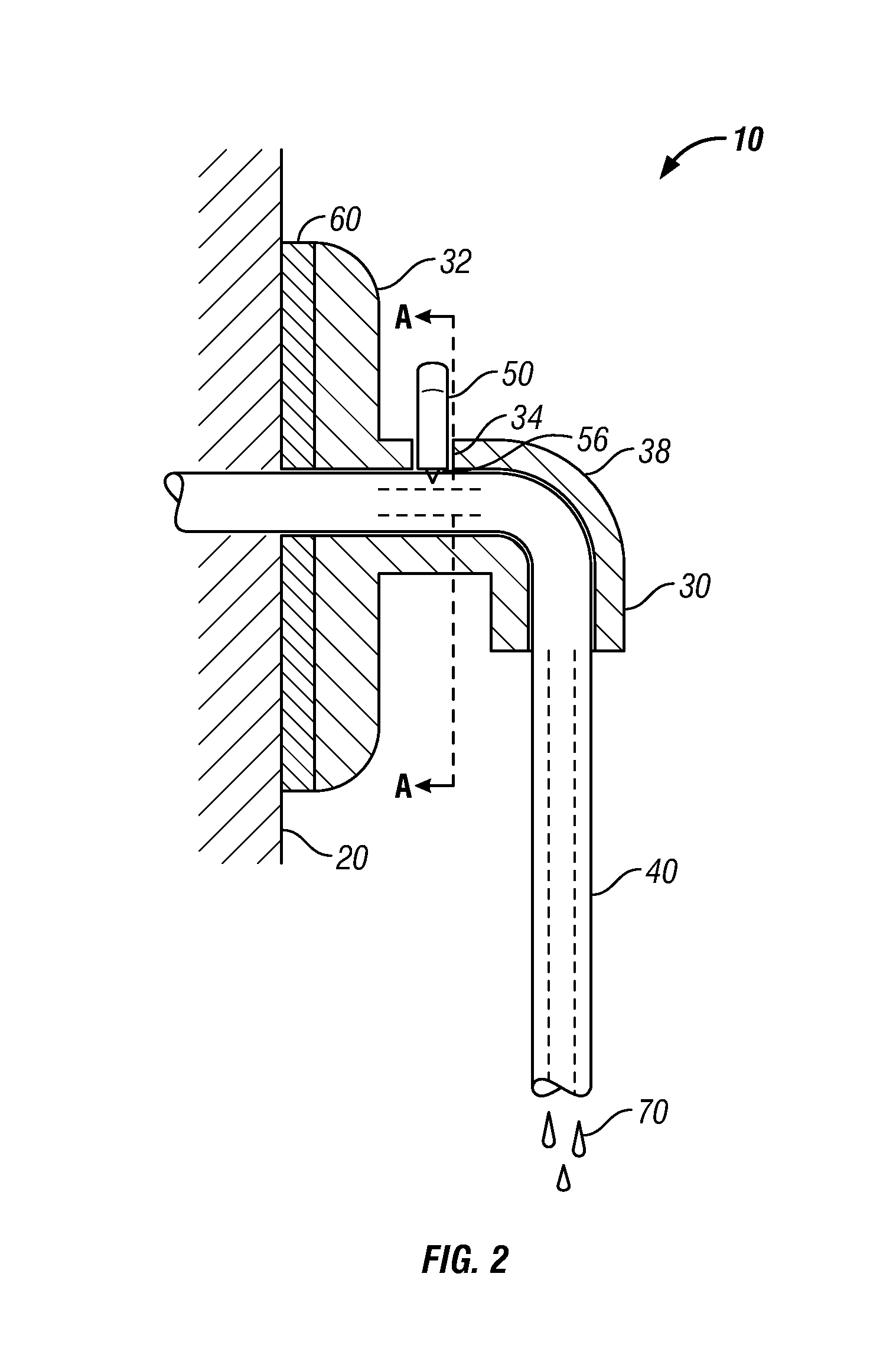Article for securing a catheter
a technology for securing catheters and catheters, applied in the field of medical devices, can solve the problems of accidental or inadvertent removal of catheters, undesirable movement of catheters, inadvertent removal, etc., and achieve the effect of preventing accidental movement of catheters, preventing accidental movement, and preventing constriction
- Summary
- Abstract
- Description
- Claims
- Application Information
AI Technical Summary
Benefits of technology
Problems solved by technology
Method used
Image
Examples
Embodiment Construction
[0023]FIG. 1 shows a perspective view of an exemplary drainage device 10. As shown in FIG. 1, drainage device 10 includes a hollow conduit 30, a catheter 40, and a retainer 50. Conduit 30 has a base 32 at a proximal end of conduit 30, a lateral opening 34, and a medial bend 38. Catheter 40 is inserted into and through conduit 30 to an opposite end of conduit 30.
[0024]FIG. 2 is a side view of drainage device 10 showing a sectional view of conduit 30, but showing catheter 40 in full. In FIG. 2, retainer 50 is shown engaged with conduit 30. As shown in FIG. 2, drainage device 10 is attached to a body surface 20 (for example, an epidermis surface). Fluid(s) 70 may drain from catheter 40 at a distal end of conduit 30.
[0025]A method of using drainage device 10 includes inserting catheter 40 into conduit 30, adhering conduit 30 to body surface 20, and engaging retainer 50 with conduit 30 to secure catheter 40 in place. A method of use may also include disengaging retainer 50 from conduit 3...
PUM
 Login to View More
Login to View More Abstract
Description
Claims
Application Information
 Login to View More
Login to View More - R&D
- Intellectual Property
- Life Sciences
- Materials
- Tech Scout
- Unparalleled Data Quality
- Higher Quality Content
- 60% Fewer Hallucinations
Browse by: Latest US Patents, China's latest patents, Technical Efficacy Thesaurus, Application Domain, Technology Topic, Popular Technical Reports.
© 2025 PatSnap. All rights reserved.Legal|Privacy policy|Modern Slavery Act Transparency Statement|Sitemap|About US| Contact US: help@patsnap.com



